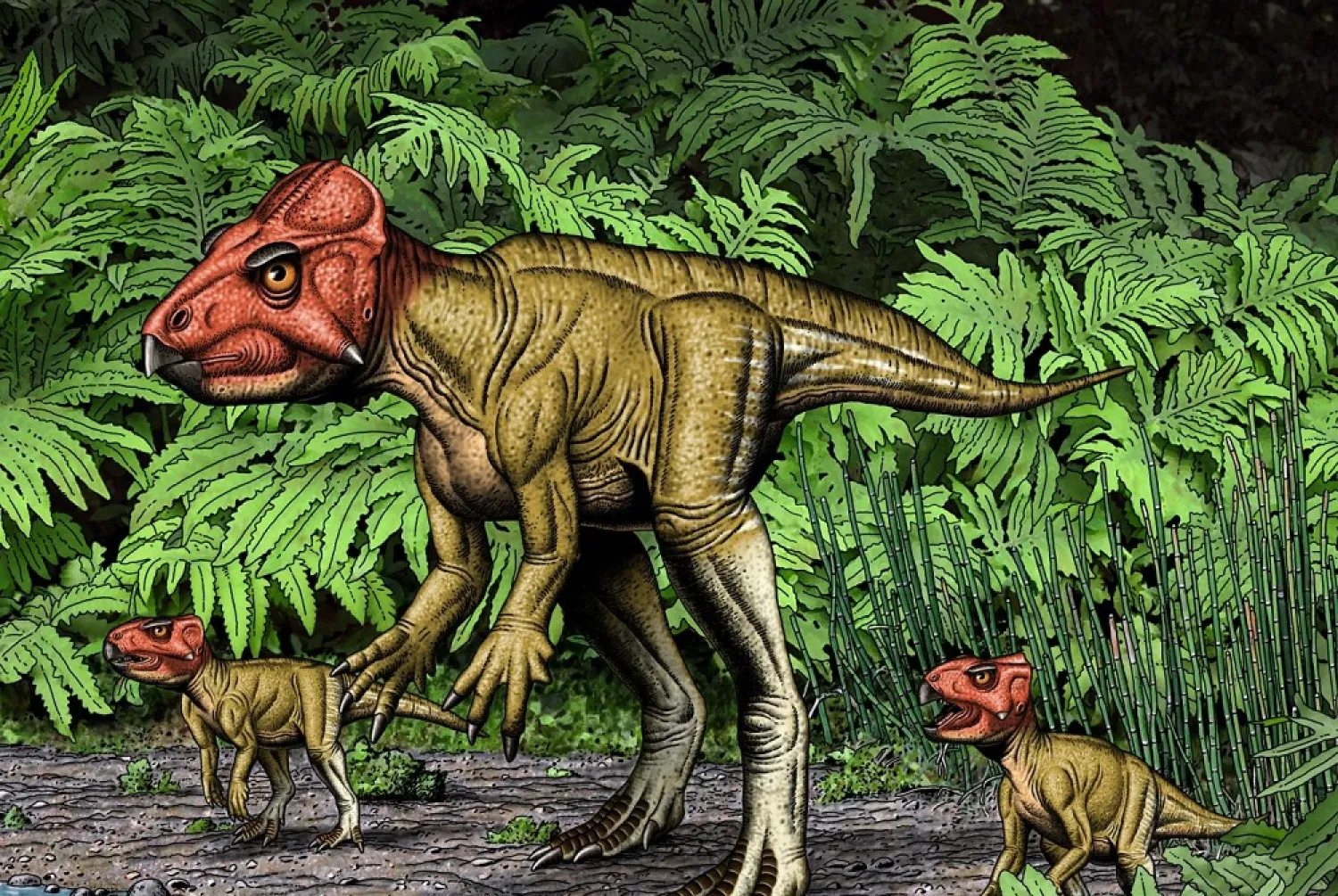Paleontologists have created a full rendering of a dinosaur walking on two feet.
The involved paleontologists managed to complete their rendering based on a series of articles appearing as Memoir in the Journal of Vertebrate Paleontology on July 8.
The Auroraceratops was one of many dinosaur species known from scant remains. It was named in 2005 based upon a single skull from the Gobi Desert in northwestern China.
But, in the intervening years, scientists have recovered fossils from more than 80 individual Auroraceratops, bringing this small-bodied plant-eater into one of the few very early horned dinosaurs known from complete skeletons.
In the new Memoir, researchers from the University of Pennsylvania, Chinese Academy of Sciences, and Gansu Agricultural University, described the anatomy and evolution of Auroraceratops.
Their analysis places Auroraceratops, which lived roughly 115 million years ago, as an early member of the group Ceratopsia, or horned dinosaurs, the same group to which Triceratops belongs.
In contrast to Triceratops, Auroraceratops is small, approximately 49 inches (1.25 meters) in length and 17 inches (44 cm) tall, weighing on average 34 pounds (15.5 kilograms).
While Auroraceratops has a short frill and beak that characterize it as a horned dinosaur, it lacks the "true" horns and extensive cranial ornamentation of Triceratops.
The paleontologists also provided a more detailed description, saying the Auroraceratops preserves multiple features of the skeleton, like a curved femur and long, thin claws that are unambiguously associated with walking bipedally.
Eric Morschhauser, head of the faculty at the University of Pennsylvania, said: "This rendering can now provide us with a better picture of the starting point for the changes between bipedal and quadrupedal dinosaurs."
"Before this rendering, we had to rely on Psittacosaurus for our picture of what the last bipedal dinosaur looked like,” he added.







